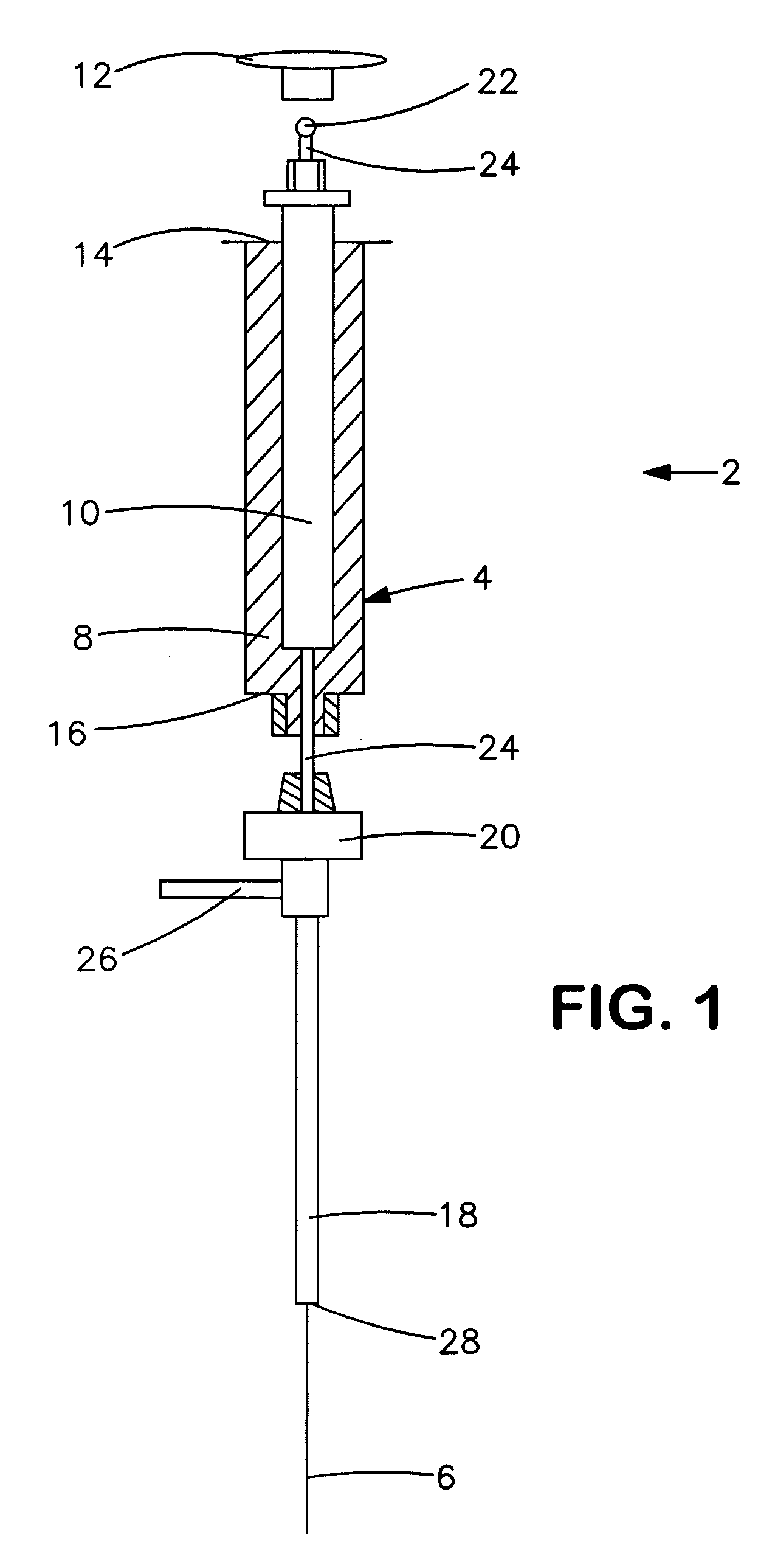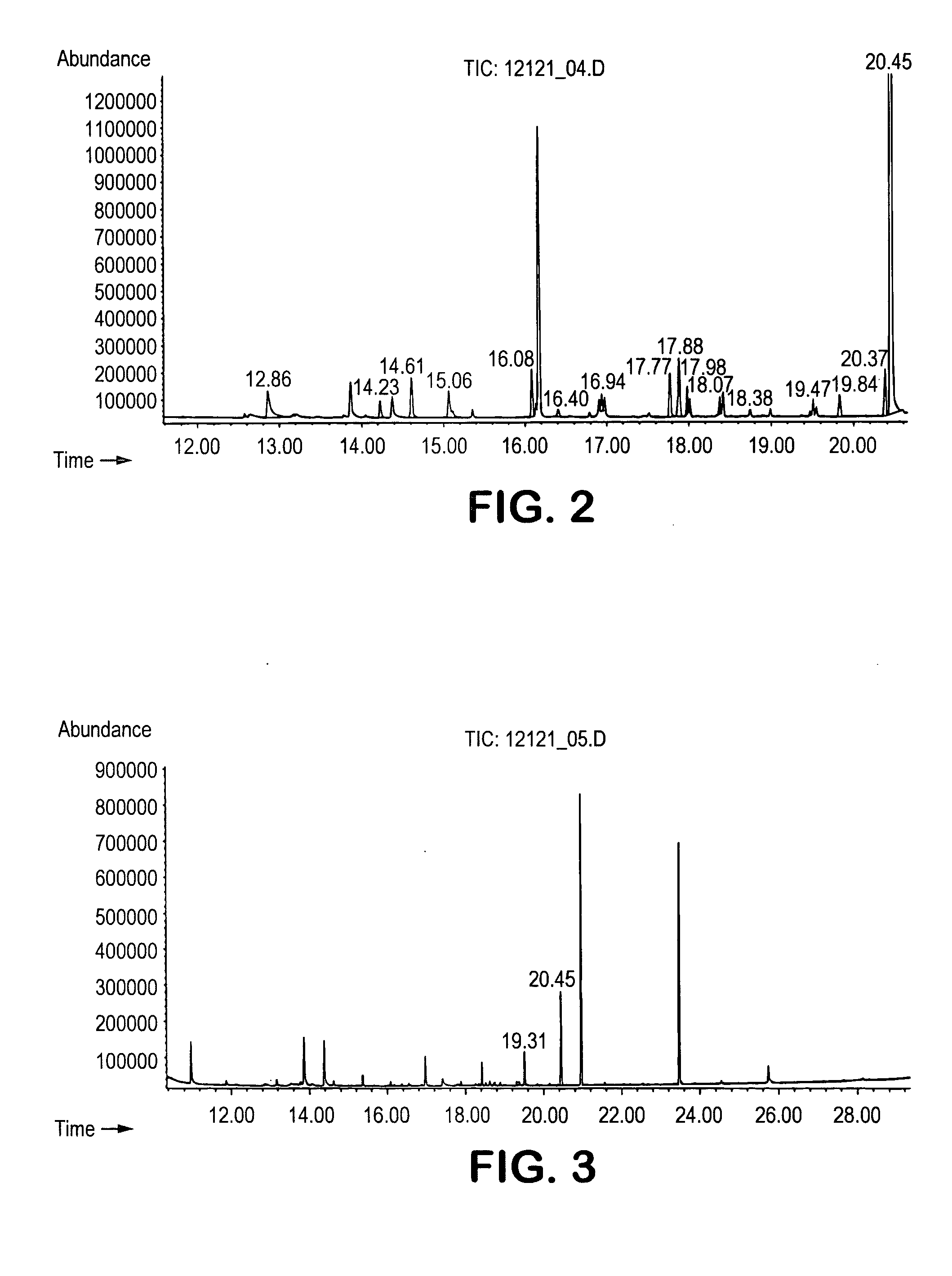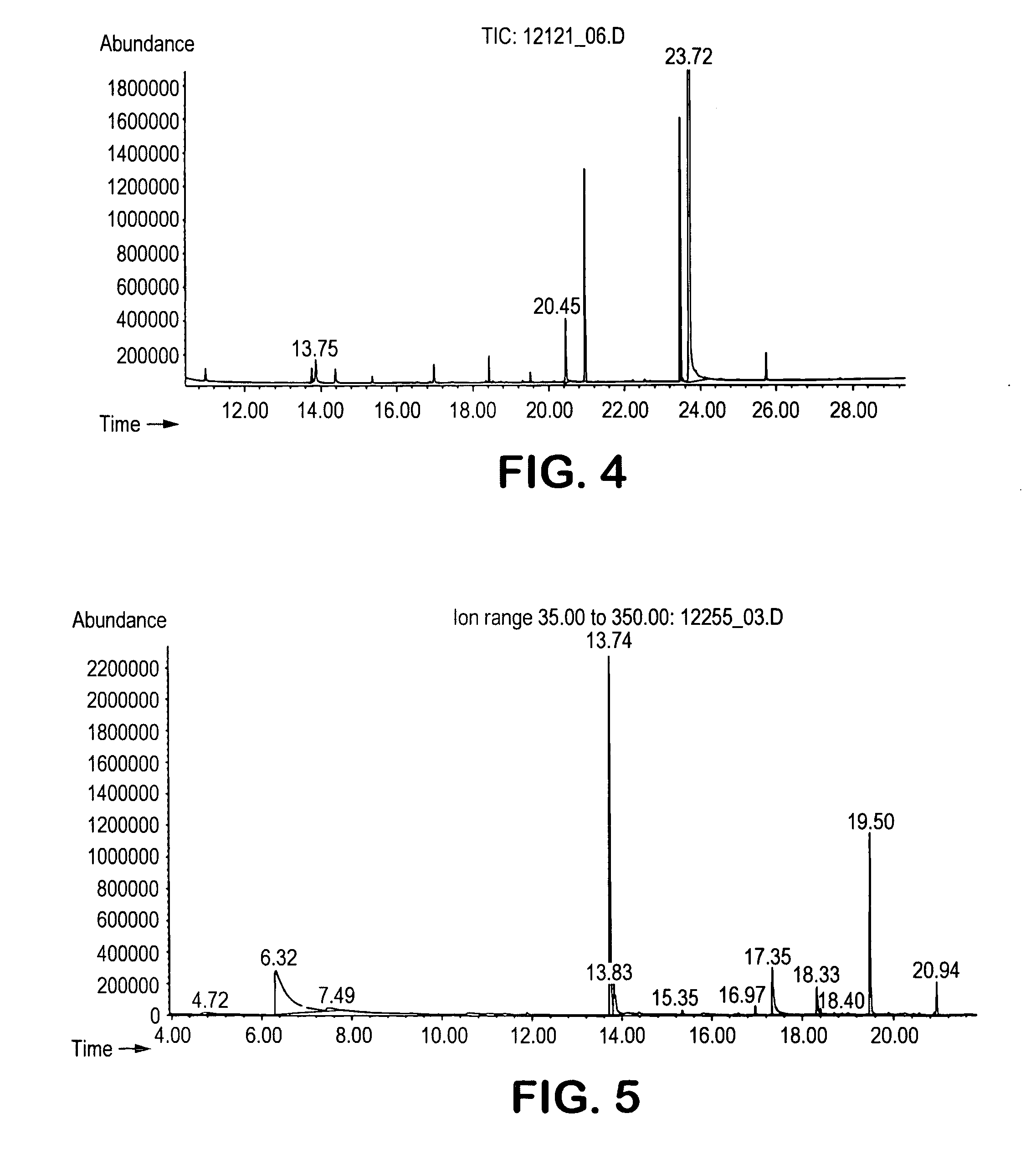Technique for detecting microorganisms
a microorganism and detection technology, applied in the field of microorganism detection, can solve the problems of increasing the difficulty of rapid detection of microorganisms, increasing the difficulty of detecting microorganisms, and increasing the number of undesirable levels of microorganisms,
- Summary
- Abstract
- Description
- Claims
- Application Information
AI Technical Summary
Benefits of technology
Problems solved by technology
Method used
Image
Examples
example 1
[0056] The ability to identify one or more volatile compounds associated with a particular type of bacteria was demonstrated. In this particular example, P. aeruginosa (ATCC #9027) was tested. A suspension of P. aeruginosa was prepared by diluting a 1×108 colony forming unit (cfu) per milliliter (ml) stock of the microorganism with a tryticase soy broth (“TSB”) solution to a concentration of 1×105 cfu / ml. One milliliter of the suspension was applied to Dextrose Sabouraud agar plates, and allowed to grow at 35° C. for 4 hours. A sample was prepared by placing the P. aeruginosa suspension into 250-milliliter septa-jar and sealing it with an aluminum foil-lined Teflon / silicone cap. For control purposes, a nutrient blank was also prepared.
[0057] The test and control samples were exposed to a 85-micrometer Carboxen™ / polydimethylsilicone “Solid Phase Microextraction” (SPME) assembly for about 30 minutes to collect the volatiles for analysis. (Supelco catalog No. 57330-U manual fiber hold...
example 2
[0061] The procedure of Example 1 was utilized to identify volatile compounds produced by S. aureus (ATCC #6538). The acquired total ion chromatogram for S. aureus is set forth in FIG. 3. The peaks of the spectrum were matched to a corresponding compound using the mass-to-charge ratios in the spectrum and their relative abundance. Only two compounds exhibited a peak substantially greater in concentration than the nutrient blank. These two compounds are identified below in Table 4.
TABLE 4Spectral Analysis for S. aureusTimeCAS No.Compound19.3124295-03-22-acetylthiazole20.44821-95-41-undecene
[0062] As indicated, the volatile compounds identified as being associated with S. Aureus included a thiazole and alkene.
example 3
[0063] The procedure of Example 1 was utilized to identify volatile compounds produced by E. coli (ATCC #8739). The acquired total ion chromatogram for E. coli is set forth in FIG. 4. The peaks of the spectrum were matched to a corresponding compound using the mass-to-charge ratios in the spectrum and their relative abundance. Only three compounds exhibited a peak substantially greater in concentration than the nutrient blank. These three compounds are identified below in Table 5.
TABLE 5Spectral Analysis for E. coliTimeCAS No.Compound13.75123-51-33-methyl-1-butanol20.44821-95-41-undecene23.72120-72-9indole
[0064] As indicated, the volatile compounds identified as being associated with E. coli included an alcohol, alkene, and fused heterocyclic compound.
PUM
| Property | Measurement | Unit |
|---|---|---|
| temperature | aaaaa | aaaaa |
| temperature | aaaaa | aaaaa |
| temperature | aaaaa | aaaaa |
Abstract
Description
Claims
Application Information
 Login to View More
Login to View More - R&D
- Intellectual Property
- Life Sciences
- Materials
- Tech Scout
- Unparalleled Data Quality
- Higher Quality Content
- 60% Fewer Hallucinations
Browse by: Latest US Patents, China's latest patents, Technical Efficacy Thesaurus, Application Domain, Technology Topic, Popular Technical Reports.
© 2025 PatSnap. All rights reserved.Legal|Privacy policy|Modern Slavery Act Transparency Statement|Sitemap|About US| Contact US: help@patsnap.com



